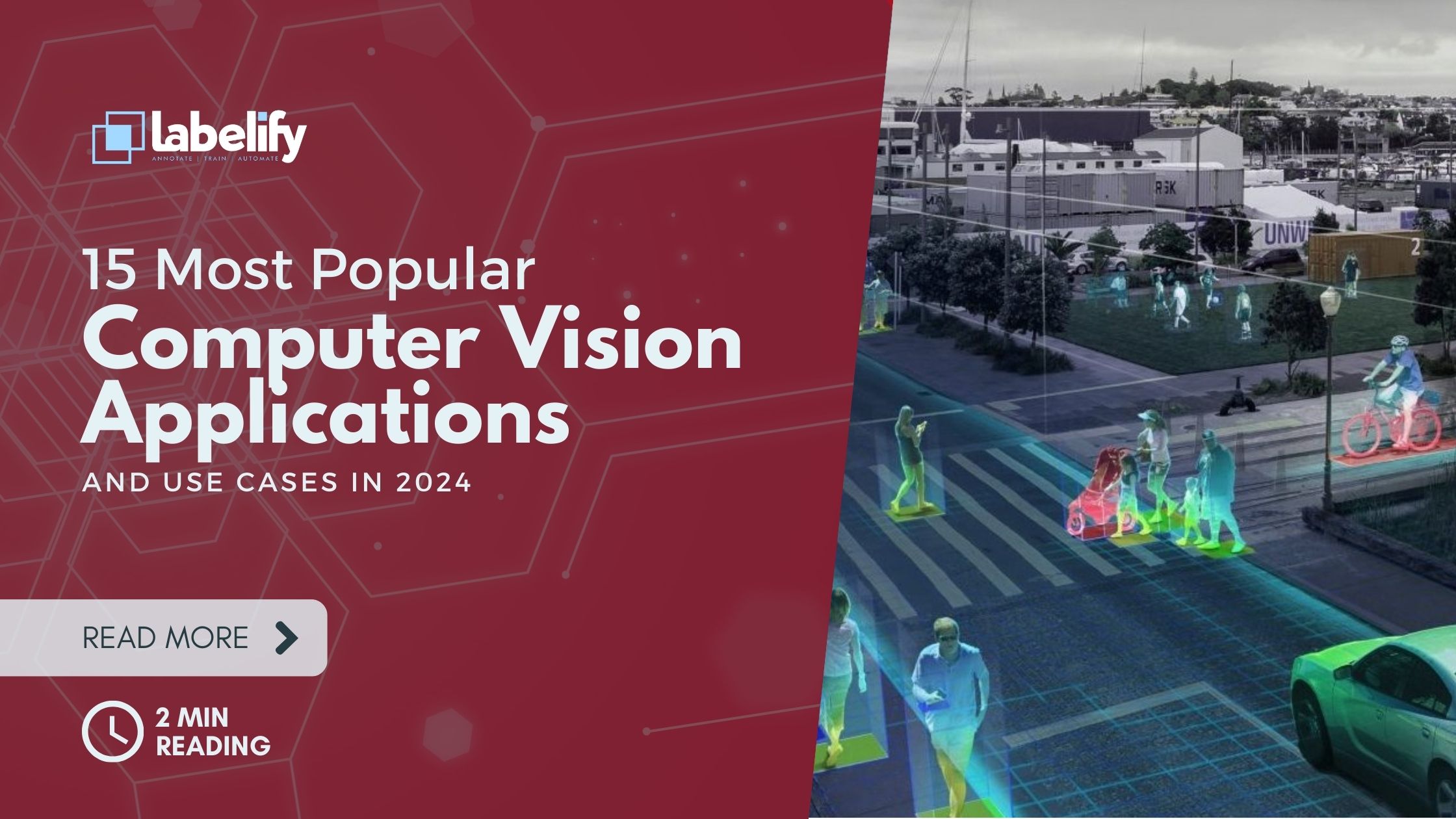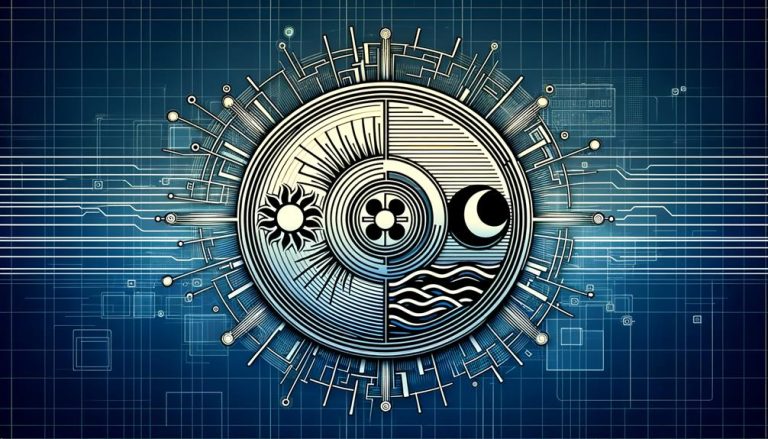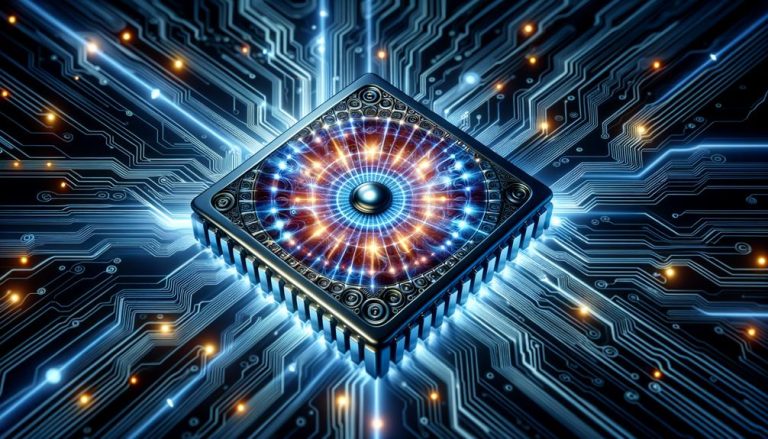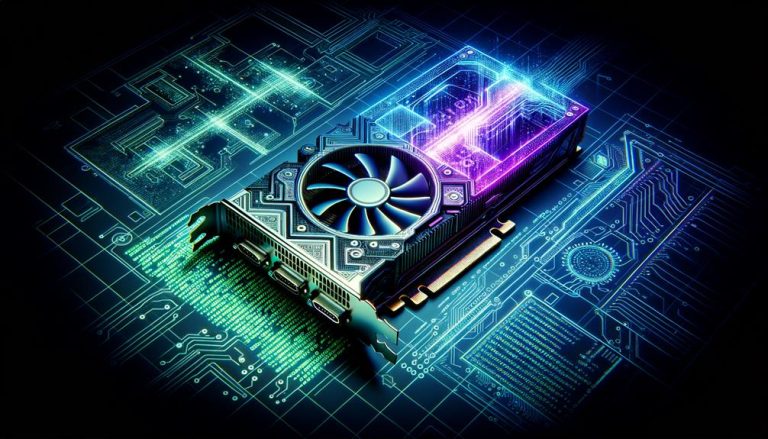Computer vision has emerged as a transformative technology, revolutionizing industries such as transportation, healthcare, manufacturing, agriculture, and retail.
In 2024, this cutting-edge field is set to redefine the way we interact with the world around us. From self-driving cars to medical imaging analysis, quality control in manufacturing to crop monitoring in agriculture, computer vision applications are driving innovation, efficiency, and safety.
In this article, we explore the 15 most popular computer vision applications and use cases that will shape the future.
Avaimet takeawayt
- Self-driving cars rely on computer vision for various tasks such as object detection, 3D mapping, and motion estimation.
- Computer vision plays a crucial role in medical imaging analysis, aiding in cancer detection, medical diagnoses, and treatment.
- In manufacturing, computer vision is used for quality control, object recognition, and robot guidance, among other applications.
- Computer vision has significant applications in agriculture, including crop monitoring, livestock monitoring, and precision agriculture.
Self-Driving Cars and Autonomous Vehicles
Self-driving cars and autonomous vehicles heavily rely on computer vision technology for various tasks such as object detection, 3D mapping, and motion estimation. This innovative technology enables these vehicles to perceive their surroundings and make informed decisions, leading to a safer and more efficient transportation system.
However, there are several challenges that need to be addressed in the development and implementation of self-driving cars. These challenges include ensuring reliable object detection in various weather conditions, handling complex traffic scenarios, and addressing ethical considerations in autonomous vehicles.
Ethical considerations in autonomous vehicles involve determining how these vehicles should prioritize the safety of occupants versus pedestrians or other vehicles in case of an unavoidable accident.
Overcoming these challenges and addressing ethical considerations will be crucial in realizing the full potential of self-driving cars and creating a future of liberated transportation.
Medical Imaging Analysis in Healthcare
Medical imaging analysis plays a pivotal role in healthcare by leveraging computer vision technology to interpret and analyze medical images. This technology enables medical professionals to accurately diagnose diseases and make informed treatment decisions.
One significant application of computer vision in medical imaging analysis is medical image segmentation. This process involves identifying and separating different structures or regions within an image, such as organs or tumors, for further analysis.
Another important use case is computer-aided diagnosis, where computer vision algorithms assist in the detection and classification of abnormalities or diseases in medical images.
Quality Control in Manufacturing
Quality control in manufacturing is another significant application of computer vision technology in various industries. It ensures that products meet predefined quality standards, leading to improved customer satisfaction and reduced waste. Computer vision enables manufacturers to automate the inspection process, resulting in faster and more accurate quality assessments. Here are three ways computer vision is revolutionizing quality control in manufacturing:
- Defect detection: Computer vision algorithms can identify defects, such as cracks, dents, or discoloration, on products during the manufacturing process. This allows for immediate corrective action, reducing the likelihood of faulty products reaching the market.
- Object recognition and tracking: Computer vision systems can recognize and track objects on the production line, ensuring that the correct components are being used and assembled in the right order. This helps to prevent errors and inconsistencies in the manufacturing process.
- Process monitoring and optimization: Computer vision technology can monitor key parameters, such as temperature, pressure, and speed, to ensure that the manufacturing process is running smoothly. It can also provide real-time feedback and insights to optimize production efficiency and minimize defects.
Crop Monitoring and Pest Detection in Agriculture
Crop monitoring and pest detection in agriculture is a pivotal application of computer vision technology that revolutionizes farming practices and enhances yield optimization.
By utilizing computer algorithms and image processing techniques, farmers can continuously monitor the growth and health of their crops, enabling early detection of any potential issues such as nutrient deficiencies or diseases. This allows for timely intervention and precise management strategies to be implemented, thereby increasing crop yield and quality.
Additionally, computer vision technology enables the detection and identification of pests and insects that could potentially harm the crops. With the aid of precision agriculture techniques, farmers can target specific areas affected by pests, minimizing the use of pesticides and reducing environmental impact.
Cashier-Less Stores and Automated Checkout in Retail
Cashier-less stores and automated checkout have become increasingly popular in the retail industry, revolutionizing the way customers make purchases. This innovative technology liberates shoppers from long queues and allows for a seamless and efficient shopping experience.
- Increased convenience: Customers can simply pick up items they want to purchase and walk out of the store without the need to wait in line to pay.
- Enhanced efficiency: Automated checkout systems utilize computer vision technology to accurately identify and track products, enabling swift and accurate transactions.
- Improved inventory management: Computer vision enables real-time monitoring of shelf stock, ensuring that products are always available for customers.
In addition to transforming the retail sector, computer vision is also making its mark in augmented reality applications in manufacturing. These applications leverage computer vision technology to improve quality control, object recognition, and tracking, leading to increased productivity and efficiency in the manufacturing process.
With the continuous advancements in computer vision, the future of cashier-less stores and automated checkout looks promising, offering customers a truly liberating retail experience.
Blood Loss Measurement During Childbirth
Blood loss measurement during childbirth is a critical application of computer vision technology. By leveraging image analysis, computer vision improves the accuracy of blood loss measurement, leading to better treatment outcomes and enhanced maternal health. Accurate measurement is crucial as excessive blood loss can have severe consequences for both the mother and the baby.
With computer vision, healthcare professionals can efficiently monitor blood loss in real-time, allowing for immediate intervention when necessary. This technology has a transformative impact on maternal health, ensuring that healthcare providers can quickly and accurately assess blood loss during childbirth, enabling timely and appropriate medical intervention.
Digital Pathology Enhancement
Digital pathology enhancement is a widely utilized application of computer vision technology in the medical field. With advancements in medical image analysis, computer vision is revolutionizing the way medical professionals interpret and analyze digital pathology images.
Improved Diagnostic Accuracy:
Computer vision algorithms can analyze and interpret medical images with high precision, assisting pathologists in detecting and diagnosing diseases more accurately.
Enhanced Efficiency:
By automating the analysis process, computer vision reduces the time and effort required for pathologists to review and interpret pathology images, leading to faster results.
Overcoming Implementation Challenges:
The implementation of digital pathology faces challenges such as standardization of image formats, storage and retrieval, and security. Computer vision technology can help overcome these challenges by providing robust and scalable solutions.
Advancements in medical image analysis combined with computer vision technology have the potential to revolutionize digital pathology, improving diagnostic accuracy and efficiency while overcoming implementation challenges.
Movement Analysis for Neurodevelopmental Disorders
Movement analysis plays a crucial role in analyzing patient movement and predicting neurodevelopmental disorders in the medical field. By utilizing computer vision techniques, healthcare professionals can accurately track and analyze the movements of patients, allowing for the early detection and appropriate measures for neurodevelopmental disorders.
This technology enables the identification of abnormal movement patterns and provides valuable insights into the development and progression of disorders such as autism spectrum disorder, cerebral palsy, and attention deficit hyperactivity disorder.
With patient movement analysis, healthcare providers can intervene at an early stage, providing timely interventions and personalized treatments. By harnessing the power of computer vision, we can revolutionize the way we diagnose and manage neurodevelopmental disorders, ultimately improving the quality of life for individuals affected by these conditions.
PPE Detection in Construction and Safety
PPE detection in construction and safety is a widely utilized computer vision application for ensuring workplace safety and security. By leveraging computer vision technology, construction sites can effectively detect the presence of Personal Protective Equipment (PPE) to ensure that workers are properly equipped.
Here are some key benefits and challenges associated with PPE detection in construction and safety:
- Benefits:
- Improved worker safety: PPE detection helps ensure that workers are wearing the necessary protective gear, reducing the risk of injuries.
- Enhanced compliance: By automating the detection process, construction sites can ensure adherence to safety regulations and standards.
- Real-time monitoring: Computer vision allows for continuous monitoring of PPE usage, enabling prompt intervention if any deficiencies are detected.
- Challenges:
- Object recognition: Identifying different types of PPE, such as hard hats, safety vests, and goggles, can be challenging due to variations in color, shape, and visibility.
- Environmental conditions: Factors like poor lighting or occlusions can impact the accuracy of PPE detection algorithms.
- Scalability: Implementing PPE detection across large construction sites with multiple workers can be a complex task.
Predictive Maintenance for Asset Management
For efficient asset management, predictive maintenance is a crucial application of computer vision technology in various industries. By using computer vision algorithms and machine learning techniques, companies can proactively identify maintenance needs and prevent asset damage. This ensures timely maintenance and reduces costs associated with unexpected breakdowns. Predictive maintenance trends in asset management strategies are driving the adoption of computer vision technology. Companies are leveraging computer vision to monitor the condition of assets in real-time, analyze patterns and anomalies, and predict maintenance requirements. This allows for more efficient allocation of resources and maximizes the lifespan of assets. The following table provides a visual representation of the benefits of predictive maintenance for asset management:
| Predictive Maintenance for Asset Management |
|---|
| – Proactive identification of maintenance needs |
| – Timely maintenance to prevent asset damage |
| – Reduction in unexpected breakdowns and associated costs |
With the integration of computer vision technology, asset management strategies are becoming more proactive and efficient, leading to improved operational performance and cost savings.
Intelligent Weed Detection and Removal
Intelligent weed detection and removal is a valuable application of computer vision technology, enabling efficient and cost-effective management of weed growth in various industries.
With the advancements in weed detection technologies, computer vision systems can accurately identify and classify different types of weeds in real-time. This allows for targeted and precise robotic weed control, where autonomous robots equipped with weed removal tools can selectively remove weeds without the need for manual labor or harmful chemical pesticides.
The benefits of this approach include reduced costs, increased productivity, and the avoidance of pesticide contamination, promoting sustainable and eco-friendly practices in agriculture and landscaping.
As computer vision continues to evolve, the potential for intelligent weed detection and removal to revolutionize weed management practices is immense, liberating industries from the challenges posed by weed growth.
Early Insect Pest Detection for Crop Protection
Early detection of insect pests is crucial for effective crop protection and management in the agricultural industry.
Computer vision technology plays a vital role in enabling early insect pest detection techniques. By harnessing the power of machine learning algorithms, computer vision systems can accurately identify and classify insects that pose a threat to crops.
These systems analyze images or videos captured from cameras installed in fields or greenhouses, and use advanced image processing techniques to detect and distinguish insects from the background.
Machine learning algorithms then classify the detected insects based on their species and potential damage they can cause to the crops.
This early identification allows farmers to take timely intervention measures, such as targeted pesticide application or biological control methods, to mitigate the damage caused by insect pests, thereby enhancing pest management and crop protection.
Continuous Crop and Yield Monitoring
Computer vision technology plays a crucial role in enabling continuous crop and yield monitoring in the agricultural industry. With the help of remote sensing technology, farmers can gather real-time data about their crops, allowing for precise and timely decision-making.
Here are three key benefits of using computer vision for continuous crop and yield monitoring:
- Precision agriculture: Computer vision enables farmers to monitor crops at a granular level, analyzing factors such as plant health, growth patterns, and nutrient deficiencies. This data helps optimize the use of resources, such as water and fertilizers, resulting in increased yield and reduced environmental impact.
- Timely intervention: By detecting early signs of stress or disease in crops, computer vision allows farmers to take prompt action. This includes targeted treatment and pest management, preventing potential yield losses and ensuring healthier crops.
- Data-driven insights: Computer vision technology generates vast amounts of data, which can be further analyzed to identify patterns and trends. By leveraging this data, farmers can gain valuable insights into crop performance, optimize planting strategies, and make informed decisions to maximize productivity.
Augmented Reality Applications in Manufacturing
Augmented reality applications are revolutionizing manufacturing processes by seamlessly integrating virtual elements into the physical environment.
In the manufacturing industry, augmented reality is being used to enhance worker productivity, improve safety, and streamline production workflows.
One of the key applications is in quality control, where augmented reality overlays virtual instructions and guidelines onto physical objects, enabling workers to easily identify defects and ensure products meet predefined quality standards.
Another application is in robot guidance and control, where augmented reality provides real-time feedback and instructions to guide robots in performing complex tasks with precision.
Additionally, augmented reality is being used for process monitoring and optimization, allowing manufacturers to identify bottlenecks, inefficiencies, and areas for improvement.
With the continuous advancements in augmented reality technology, the possibilities for its applications in manufacturing are truly limitless.
Shelf Monitoring and Inventory Management in Retail
In the realm of retail, one popular computer vision application and use case is the efficient shelf monitoring and inventory management. This technology revolutionizes the traditional retail experience by providing real-time insights and automation.
Here are three key benefits of computer vision in shelf monitoring and inventory management:
- Accurate Inventory Tracking: Computer vision algorithms can accurately detect and track products on the shelves, eliminating the need for manual inventory checks. This ensures that shelves are always stocked with the right products, reducing out-of-stock situations and improving customer satisfaction.
- Shelf Optimization: By analyzing shelf layouts and product placements, computer vision can optimize shelf arrangements to maximize sales and enhance the overall shopping experience. It can suggest strategic changes to increase product visibility and highlight promotions or new arrivals.
- Loss Prevention: Computer vision can identify instances of theft or misplaced items, alerting store staff in real-time. This helps in preventing losses and maintaining accurate inventory records.
By leveraging computer vision in shelf monitoring and inventory management, retailers can streamline operations, improve customer experience, and boost profitability.
Looking ahead, the integration of computer vision with other technologies, such as augmented reality applications in agriculture and pedestrian detection for traffic management, holds immense potential for further innovation and liberation in the retail sector.
Usein Kysytyt Kysymykset
How Does Computer Vision Technology Improve Safety in Self-Driving Cars and Autonomous Vehicles?
Computer vision technology plays a crucial role in improving safety in self-driving cars and autonomous vehicles. It enables object detection, 3D mapping, and motion estimation, which are essential for real-time situational awareness.
Computer vision also facilitates pedestrian detection, ensuring the safety of both pedestrians and vehicle occupants. Moreover, it assists in traffic management, transit safety, and parking occupancy detection.
What Are the Key Benefits of Using Computer Vision in Medical Imaging Analysis?
The key benefits of using computer vision in medical imaging analysis include:
- Improved diagnosis: Computer vision technology enhances the efficiency and accuracy of medical diagnoses by analyzing and interpreting medical images such as X-rays, CT scans, and MRI.
- Faster treatment: By leveraging computer vision, healthcare professionals can provide timely and precise diagnoses, leading to improved patient outcomes and more efficient treatment strategies.
Computer vision technology is particularly useful in the detection of various conditions, including cancer, such as breast, skin, and melanoma skin cancer.
How Does Computer Vision Enhance Quality Control in Manufacturing Processes?
Computer vision plays a crucial role in enhancing quality control in manufacturing processes. By utilizing advanced image analysis algorithms, computer vision enables automated inspection and defect detection, ensuring that products meet predefined quality standards.
This technology can detect even subtle defects that may be missed by human inspectors, improving accuracy and efficiency in quality assurance. By integrating computer vision into manufacturing processes, companies can minimize the risk of faulty products reaching the market, leading to higher customer satisfaction and increased operational efficiency.
What Are the Advantages of Using Computer Vision for Crop Monitoring and Pest Detection in Agriculture?
Computer vision offers numerous advantages for crop monitoring and pest detection in agriculture.
It enables precision agriculture by providing continuous monitoring of plant growth and allowing farmers to make informed decisions regarding irrigation, fertilization, and disease control.
Additionally, computer vision aids in early pest detection, enabling timely intervention and reducing crop damage.
With automated surveillance capabilities, it enhances efficiency and accuracy in crop management, leading to improved yield and sustainability in agriculture.
How Does Computer Vision Enable Automated Checkout and Improve Efficiency in Retail Stores?
Computer vision enables automated checkout and improves efficiency in retail stores by using image recognition technology to identify products and track customer purchases. This eliminates the need for manual scanning and reduces checkout time.
Additionally, computer vision can assist in shelf monitoring and inventory management, ensuring that products are readily available and reducing stockouts.
Furthermore, computer vision can be used in security surveillance applications, enhancing store security by detecting suspicious activities and preventing theft.
Johtopäätös
In conclusion, computer vision has emerged as a transformative technology with a wide range of applications across industries.
From self-driving cars and medical imaging analysis to quality control in manufacturing and crop monitoring in agriculture, computer vision is revolutionizing processes, enhancing efficiency, and driving innovation.
With its potential for further advancements and continued integration into various sectors, computer vision is poised to shape the future and bring about unprecedented levels of accuracy, automation, and optimization.




